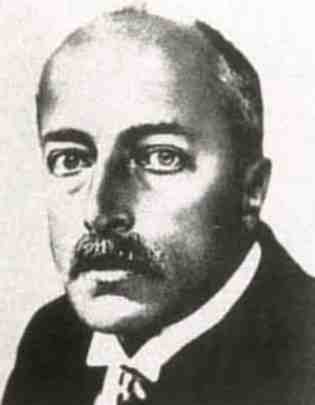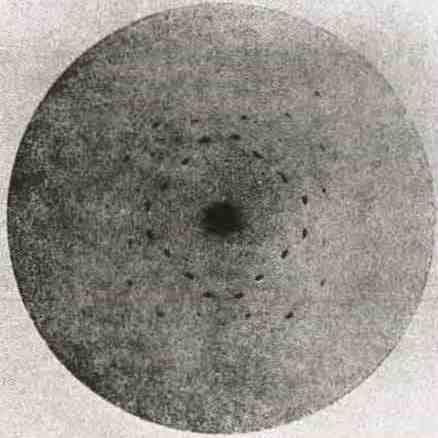


Feature article
The Laue technique and its application
 Max Von Laue (from Die Entdeckung der Kristalle, Fabian, Eginhard, 1 Auflage, Leipzig, Dt. Verlag f. Grundstoffind., p. 126, 1986, photo courtesy of J. Lange).
Max Von Laue (from Die Entdeckung der Kristalle, Fabian, Eginhard, 1 Auflage, Leipzig, Dt. Verlag f. Grundstoffind., p. 126, 1986, photo courtesy of J. Lange).
On the 8th of June 1912, during a meeting of the Deutsche Physicalische Gesellschaft in Berlin, the German physicist Max Felix Theodor Von Laue reported on a discovery he had made together with Friedrich and Knipping, the observation of the diffraction of X-rays by crystals. This experiment proved the wave nature of X-rays and the space lattice hypothesis of crystals. The experimental setup consisted of an X-ray tube, diaphragms, the crystal, and the film plate.
Einstein later wrote to Von Laue, "Your experiment is one of the most beautiful experiences from the physical sciences" (Herneck. F., Max v. Laue, Biographien Hervorragender Naturwissenschaftler, Techniker und Mediziner, Vol. 42, Leipzig 1979, p.35).
 The first diffraction pattern. (Photo courtesy of J. Lange.)
The first diffraction pattern. (Photo courtesy of J. Lange.)
Since that time, the Laue technique has been used mainly for symmetry and orientation studies and the experimental setup has not changed much. Sometimes the X-ray tube is replaced by a synchrotron radiation source in order to permit shorter exposure times and the film is replaced by two-dimensional detectors with high sensitivity. Offsetting the advantage of simplicity, this method has two serious drawbacks:
- Each reflection is recorded with a different unknown wavelength, and
- all orders of a reflection are superimposed in the same spot on the film.
 Van Laue's experimental set-up. (Photo courtesy of J. Lange.)
Van Laue's experimental set-up. (Photo courtesy of J. Lange.)
Recently attempts have been made to combine the Laue technique with modern diffractometer devices. The Laue diffractometer, described by the author at the Dresden European Crystallographic Meeting in the fall of 1994, was constructed on a proposal of Prof. Burzlaff. It is a four-circle diffractometer with two detector axes Q and n perpendicular to each other and two crystal axes w and d with an inclination angle of 30°; w and Q are concentric. The detector is a conventional proportional counter with multichannel analyzer. The X-ray source is an ordinary tungsten tube (2kW). The diffractometer is especially designed in order to measure integrated intensities by the Laue technique for X-ray structure analysis of single crystals.
By means of the crystal axes, the integrated intensity of each scattering vector can be recorded at different wavelengths. So it is possible to investigate effects which depend on wavelength, like anomalous dispersion, secondary and primary extinction, and absorption. Furthermore the orders of a reflection which are superimposed in the same spot can be separated by the energy dispersive detector system. In this way the relative proportion of the orders can be observed.
A medium sized inorganic structure has been used to demonstrate that surprisingly good crystallographic information can be obtained with the Laue technique, despite the use of a simple detector system and the low intensity of an ordinary X-ray tube. The accuracy of the measured integrated intensities of X-rays is comparable to that of data collected by conventional techniques in a comparable time.
The diffractometer was also used to get detailed information about the spectrum of the white bremsstrahlung and characteristic radiation of the tungsten X-ray tube. The results are in very good agreement with Kramers' theory. These results are important for the comparison of intensity data collected at different wavelengths.
At the moment the effect of extinction at different wavelengths is being investigated. It has been found that the extinction effect is considerably less by the Laue technique than with the monochromatic technique.
Joachim Lange

